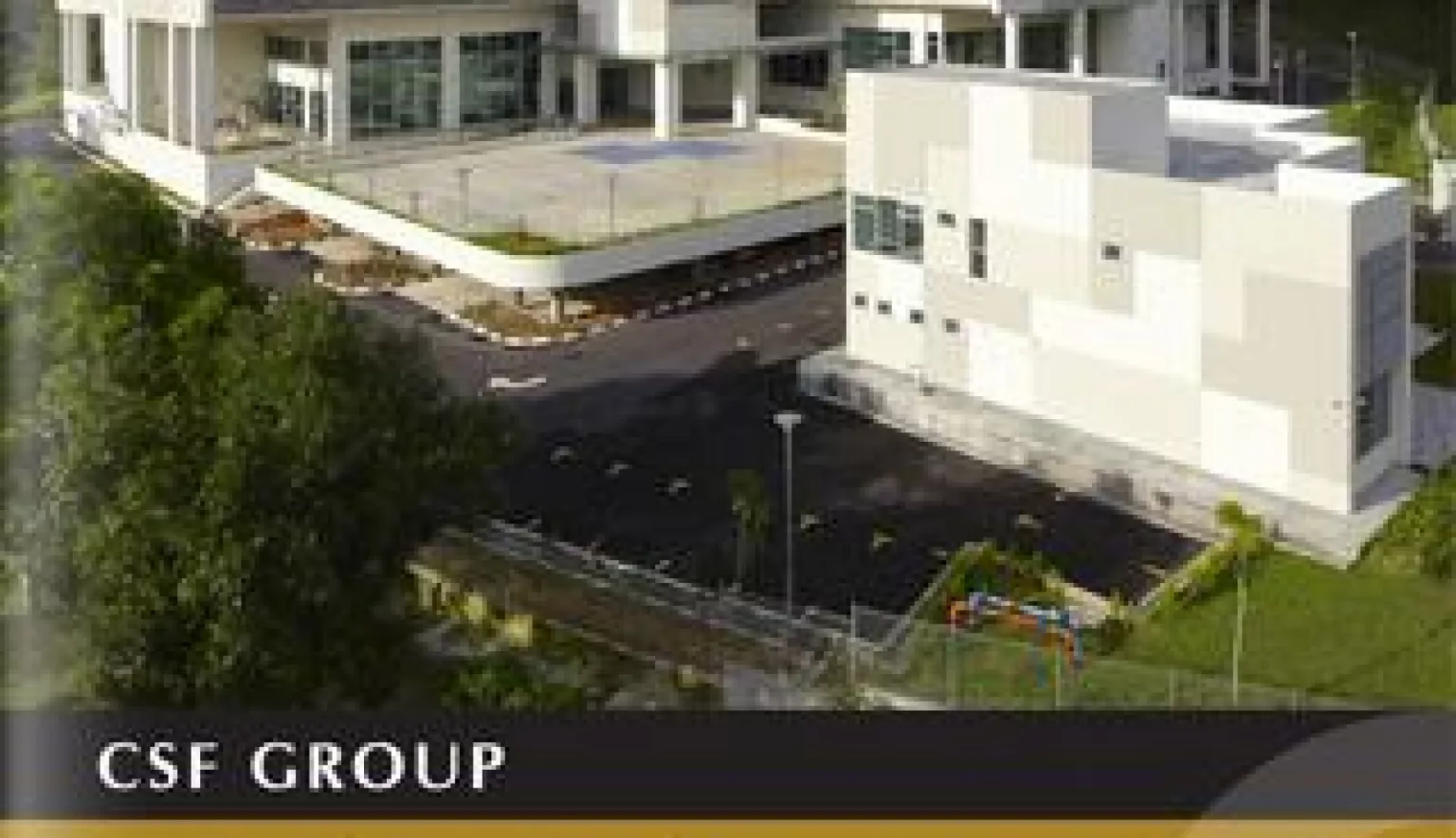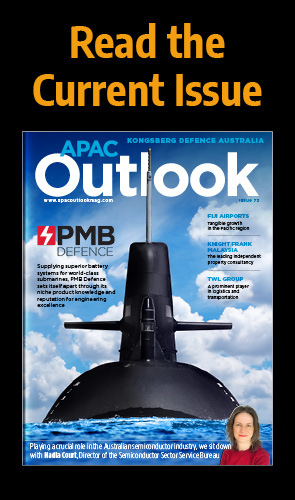Since inception in 1991, CSF Group has been a familiar face in Malaysia’s data centre scene, evolving from a small computer room facilities builder into a fully-fledged data centre solutions provider with three commercial-sized data centres under its management.
CUTTING-EDGE TURNKEY SOLUTIONS
Having undertaken contract works to both build and fit-out more than 200 data centres across Malaysia for customers from a wide array of industries including the Malaysian stock exchange, financial institutions, oil & gas companies, telecommunications companies and government agencies; the Group embarked on its first commercial-sized data centre, the CX1, comprising 45,500 square feet of net data centre space with an IT load capacity of 1.1 megawatts (MW).
“As a carrier neutral data centre, we quickly capitalised on the market trend, interconnecting telecommunication carriers and collocation providers. The shift towards the outsourcing of data centre facilities and the subsequent demand for higher density racks and servers saw us invest in our own, much larger data centre facilities, while also continually managing our operational costs to be as efficient and competitive as possible,” explains Lee King Loon, Chief Financial Officer for CSF Group.
Once CX1 reached capacity, CSF Group initiated work on a substantially larger second data centre, the CX2, which was commissioned in early 2009, comprising 157,500 square feet of net data centre space with an initial IT load capacity of 5MW. “Due to demand, we invested in additional equipment to increase the IT load capacity of CX2 to 7MW. At the time, this facility was the largest carrier neutral purpose built commercial data centre in Southeast Asia,” he adds.
The Group also operates the CX3 data centre located in Johor, Malaysia which comprises 2,000 square feet of net data centre space and 0.2MW of IT load capacity, housed within a commercial office building.
Furthermore, it also has a 20 percent investment in a data centre in Hanoi, Vietnam, referred to as CX4, which comprises approximately 3,300 square feet of net data centre space and 0.4MW of IT load capacity.
Completing its data centre investments is CX5, which was developed over three phases spanning the last three years, with the final phase reaching completion this year. Boasting a capacity of more than 200,000 square feet of net data centre space with a total IT load capacity of 12MW, the Group’s priority is to increase the occupancy and utilisation of this data centre.
The Group places great emphasis on the maintenance of its facilities to the highest standards while keeping operating costs down for customers. In this regard, there are ongoing efforts to improve operational efficiency and to identify and implement new technologies to increase energy efficiency.
“Having been listed on AIM of the London Stock Exchange since March, 2010, we were able to realise our plan to develop CX5 as a state-of the-art and high-end data centre fitted with energy-efficient cooling systems and designed with the capability of hosting high-power density racks and servers. While we continue to pitch for contracts to design and build smaller data centres and computer rooms for third party customers, our main focus remains on operating our three commercial-sized data centres with the view of maintaining an optimum level of occupancy and continuously improving operational efficiency,” King Loon highlights.
CSF Group markets its commercial-sized data centres to larger users including telecommunications companies, internet service providers and government agencies. The data centres are typically rented to customers on a wholesale basis, along with the relevant critical infrastructure; and these customers will then manage the racks and servers themselves. “We are different from other data centre service providers as we do not offer the managed services or co-location services component. We focus on providing data centre white space and infrastructure to customers who provide managed services or co-location services. In substance, these customers will outsource their data centre infrastructure requirements to us, thereby avoiding the requirement to incur significant capital outlay and time to develop and build their own data centre facility. Our customers will also not be saddled with the responsibility and the recurring expenses associated with maintaining and replacing the infrastructural equipment and components within the data centre facility,” he further explains.
HUB OF ACTIVITY
Malaysia has become renowned for interconnectivity in ASEAN, emerging as an attractive market for those looking to acquire data centre capacity in the region. As a gateway to underdeveloped ISP markets such as Thailand, the country boasts lower real estate and electricity costs. “Although the cost of bandwidth is still higher than the likes of Singapore and Japan, Malaysia is catching up. As the cost of bandwidth continues to decrease, the country is beginning to stand tall in the face of competition from other key players in Asia Pacific,” says King Loon.
The recent shift towards cloud technology has been accompanied by the need for high-density servers. “High-density servers require very efficient cooling, therefore, we have installed water-chilled cooling systems in our CX2 and CX5 data centres, suitable for racks above 5KVA (kilo-volt-amps). Customers that host high power density racks and servers at our data centres will realise the energy cost saving benefits and other operational efficiencies associated with our data centre design and infrastructure.
“Our investments were made with a far-sighted view. Upon attaining an optimum level of occupancy in our CX5 data centre, we will be able to reap the rewards of our high initial capital outlay through cost savings and economies of scale. Our CX5 data centre also offers scalability. The IT load capacity can be increased over a planned period of time to cater to the progressive increase IT load consumption of customers,” King Loon details.
In a bid to further reduce energy costs, one of the ways CSF Group achieves sustainability is through the intuitive design of its buildings so they demand as little power as possible for peripherals such as lighting and cooling for common areas. “As data centres are typically very power-hungry facilities, we must consider, where possible, the areas where we can potentially reduce the consumption of energy in order to limit the environmental impact of our operations,” cites King Loon.
TECHNICALLY TALENTED
Comprising a team of approximately 160 employees, of which a significant number are qualified technicians that maintain its 200-plus sites on a 24-seven basis, CSF Group has a comprehensive selection of in-house training programmes conducted by the Group’s own senior engineers. King Loon explains: “We live by the philosophy of on-the-job training, direct from the source. For example, when our principal vendors launch a new product, we will send the relevant sales and technical personnel to attend the launch and learn about the product and its specifications.”
By meeting with vendors regularly, CSF Group is also able to keep abreast of the latest industry trends including; building design, power supply, precision air-conditioning, security and monitoring systems and fire protection.
King Loon concludes: “As we strive to build a sustainable revenue base, we will continue to identify areas and opportunities to improve operational efficiency and to continuously enhance our competitive advantage in the market by our ability to offer high quality products and services at a reasonable price. Current and potential customers should take advantage of the significant investments that we have made thus far, and enjoy the many benefits of hosting their data centre operations in our high quality facilities that are efficiently managed and well maintained.”





















